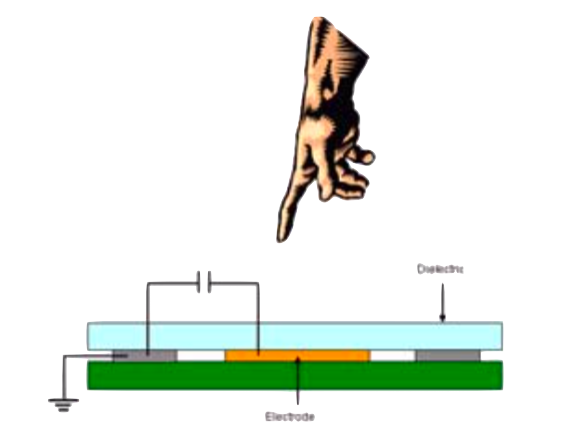“It is a hard but worthy work”
After our last discussion about wireless split keyboards, several of y'all wrote me about your computer input device hopes and dreams. Well hold fast my friends: I am happy to report that a prototype is currently being fabricated!
However, my previously reported timeline:
if the local supply chain spirits take kindly to this foreigner and I can find a reflow oven (or hotplate / toaster to sacrifice), I’ll have a prototype in time for next month’s newsletter.
turned out to be a bit optimistic.
In my defense, I did finish a reversible left/right PCB with fancy ergonomic layout and support for both Cherry MX and Kailh low-profile switches:

However, as soon as I completed the design, I took a step back and decided to start over from scratch, for a few reasons:
I mean, the industrial design here isn’t exactly compelling — it’s got that “I didn’t even try” exposed components on an oversized PCB look. (Several of you emailed wanting a rectangular grid layout, which I agree would be more visually appealing!)
I was pretty sure this design would electrically work, which really dampens the thrill of prototyping.
Mid-way through this design, I discovered I wouldn’t be able to source the larger, hand-solderable components — so I’d need to have it assembled professionally. But that would allow me to use tiny components and attempt a more interesting aesthetic. I could try to design, say, the thinnest possible mechanical keyboard.
This is when things went off the rails.
Because if you want thinnest possible, a cr2032 coin cell battery is now too thick — we need something smaller. Of course, that means we’ll have a smaller power budget; maybe around 100 mAh (compared to a coin cell’s ~230 mAh or an alkaline AAA’s relatively huge ~1000 mAh). But now we need to care about microamp leakage currents in various transistors, diodes, and the like, as well as design some kind of recharging circuitry. (I’m not going to manufacture something that requires changing five watch batteries every week, I’m not a monster!)
Long story short, my timeline suffered but I did get a keyboard design out for prototype manufacture (ETA 4 weeks). I, uh, also ended up commissioning a small production run of custom lithium ion cells. (Hit me up if you want 2mm thick adorable batteries, because oh boy do I have extras!)
One pleasant surprise in this whole process has been my email correspondences with various Chinese factories. Now, I can’t speak or write Chinese, but that has not been a problem for my new, quite helpful penpals (all of whom seem to be women named “Jenny” or “Jane”). A typical thread goes something like:
Hello, do you have a battery with [specifications]?
Thanks, Kevin
followed by:
Well received your email, this is Daisy from [factory] hope you are fine. attached our current product list, pls check whether it has suitable battery for you. Any further need, pls feel free to contact us,
and, before long:
Hope you are having a nice dream ~ Final Quotation enclosed in the attachemnt. Please kindly advice if any confuses you!
I’m not sure if some expressions are direct translations from Chinese, if my correspondents are turning the politeness up to 11 to cross the language barrier, or if (as a native English speaker) I just interpret novel phrasing as more genuine sentiment. Whatever it is, I’m loving it and doing my best to reciprocate.
My favorite quip so far has been a response to my explanation that it’ll take me a while to redesign around a new, easier-to-source microcontroller: “it is a hard but worthy work. Keep in touch and good luck!”
Yes, it is hard. But I know Jane believes in me, and I’m not going to let her down!
Project within a project
I’ve only done a handful of electronics projects, and they’re always years apart from each other — whenever I start, I end up having to re-learn the software toolchain, BOM formatting trivia, etc.
So I figured while it’s still fresh, I should design a few more things solidify this process knowledge in my head.
You know what’d go great with a keyboard? A touchpad! I also found this diagram in the Freescale Semiconductor Application Note AN3863 particularly compelling:

First touchpad prototypes are arriving later this week. (Much faster turnaround than the keyboard because I designed it using only parts that were already loaded onto my assembler’s pick-and-place machines.)
All I need to do now is understand USB and experimentally determine the, uh, capacitive response function of my fingers. Should be a piece of cake!
If you have ideas/requests for fun electrical projects (especially computer input device / bluetooth / USB related), or if you want to do some pair programming to get all this working, let me know!
Misc. stuff
Mark and Adam are sharing their thoughtful software and product design perspectives on the Muse Podcast. It is so refreshing to hear a podcast in this space that’s actually about product design rather than tech fashion.
Latest in key-in-ignition Toto door chime technology
Adorable pixel art 3d modeling tool
Who’s going to use this fast-refresh e-ink monitor to make an outdoorsy laptop?
Clever design of a massive LED ornament for a high-end shopping mall
Raytracing in notepad.exe at 30fps
Cardboard + paper-clip CNC machine is masterfully pitched
“I also believe that programmers feel latency and it affects their mood even if they don’t notice it.”
“‘Why couldn’t you stand on the floor?’ […] Lava is the clear winner at 72%”
“In Unix, everything is a file. This is often viewed as a positive, but it’s often a poor abstraction for many things.”
“Her superpower is her ability to treat something as important even before she has incontrovertible evidence that it has to be.”
Patchbay feels like a simple, low-friction yet extraordinarily powerful idea for distributed computing